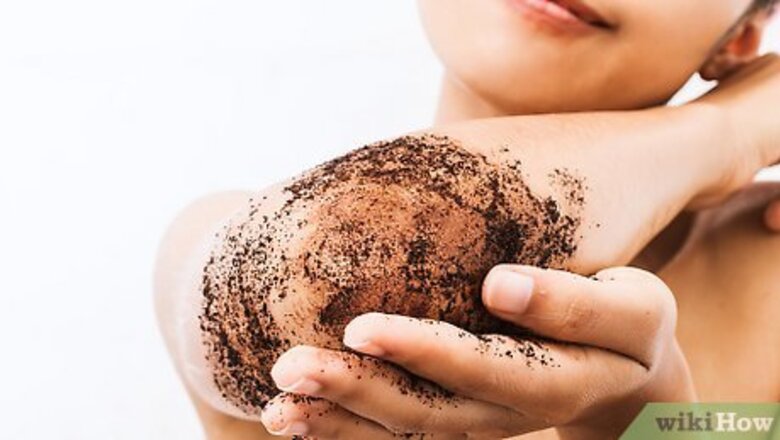
views
Choosing Your Ingredients
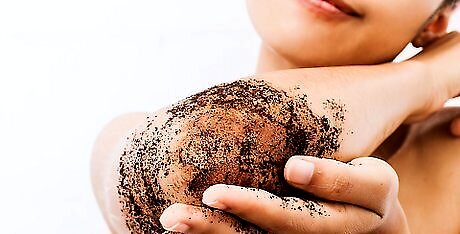
Decide how and where you will use your body scrub. Where you will use your body scrub will determine what ingredients you will use. There are body scrubs for tough, calloused areas such as elbows and heels, and body scrubs for tender areas such as the lips. Use body scrubs containing abrasive exfoliates, such as sugar, on tough, calloused areas. If you use an abrasive scrub, then you may have to moisturize your skin afterwards with lotion or body butter. Use body scrubs containing moisturizing exfoliants, such as sugar, on the rest of the body. If you want to use your scrub on your face or lips, then avoid abrasive exfoliants. Use essential oils and colorants with caution to avoid irritation.
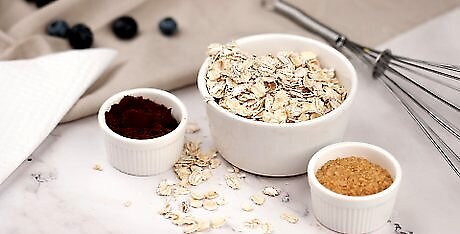
Choose your exfoliant. You will need 2 parts of exfoliant to 1 part carrier oil. There are many different types of exfoliant you can use in your body scrub, and each one has its own benefits and drawbacks. Epsom salts are great for detoxifying and moisturizing the skin. They are not very abrasive and can be used on the rest of the body. Ground coffee helps tighten the blood vessels and may help varicose veins go away for a little bit. It is also good for making the skin appear brighter. Coffee grounds do not dissolve, which makes them an excellent exfoliant to sloth away dead skin cells. They also contain antioxidant agents that help improve elastin and collagen production. Oatmeal is gentle and moisturizing. It also helps your skin feel softer. Salt is harsher and more abrasive than other exfoliants, which makes it perfect for tough, calloused areas like elbows, knees, and heels. Sea salt is particularly good for detoxifying the skin and unblocking pores. Sugar is the most common exfoliant found in body scrubs. It's gentler than some other exfoliants, such as salt, and good for reintroducing moisture into the skin. You can use white sugar or brown sugar.

Choose your carrier oil. You will need 1 part carrier oil to 2 parts of exfoliant. There are many different types of oil you can use, so long as they are intended for cooking purposes. Each oil has different properties, such as scent and consistency, and some might help reduce skin problems, such as dryness. Avocado oil is rich, thick, and moisturizing. It is good for dry and sensitive skin types. Coconut oil is thick, luxurious, and moisturizing. It's very hydrating and has antibacterial properties. You will need to melt it first either in a saucepan over the stove or in a microwave. Grape seed oil has a light, sweet smell. It is also thin compared to the other oils. It is not absorbed by the skin as easily as sunflower oil, and leaves a thin coating on your skin. Macadamia nut oil is thick and moisturizing, which makes it ideal for dry skin. Olive oil is the most common carrier oil. It is easy to find, and is good for all skin types. Sesame oil seed oil has a medium consistency, and is quickly absorbed into the skin. It is good for all skin types. Rapeseed oil has a medium consistency, and is quickly absorbed into the skin. It is good for dry and sensitive skin types. Sunflower oil is thin compared to other oils. It is easily absorbed by the skin, and is good for all skin types. Sweet almond oil smells sweet, nut-like smell. It has a medium consistency, but is absorbed quickly and easily into the skin.

Consider substituting your carrier oil. If you do not wish to use a carrier oil, you can use something else instead. You can also combine your carrier oil with another liquid ingredient. For example: Honey can be used instead of a carrier oil, or it can be combined with a carrier oil. It is a great cleanser and moisturizer. It can also be used in lip scrubs. Milk soothes and moisturizes the skin. It will also create a thinner body scrub. It can be added to the oil, or used in place of it. If you add milk to your scrub, use it within a few days. Yogurt is great for moisturizing and brightening the skin. Like honey, it can be substituted for the carrier oil, or it can be used in combination with the carrier oil. If you choose to use yogurt in your scrub, use it within a few days.
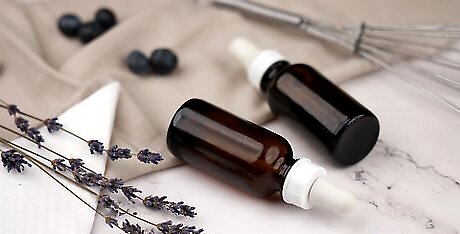
Decide what essential oil you want your scrub to have, if any. Essential oils can not only add fragrance to your scrub, but they can also help remedy skin problems, such as acne and excessive dryness. Some essential oils are also used in aromatherapy and can help lighten your mood. Soothing and relaxing oils include: lavender, rose, and sandalwood Energizing oils include: grapefruit and lemon. Cooling oils include: mint and peppermint. These are great for calloused areas, like heels. Bergamot essential oil is good for all skin types. It can also help remedy acne and eczema. Lavender essential oil not only smells great and helps sooth the senses, but it is also beneficial for dry and aging skin types. Rosemary essential oil has a fresh, woody scent. It is good for all skin types, including aging skin. It can also help remedy oily skin and acne. Sandalwood oil is good for all skin types, including sensitive skin. It can help moisturize dry skin as well. Tea tree oil is good for all skin types, especially oily skin, and can help remedy acne. Ylang ylang essential oil is good for oily skin. It is also a home remedy for acne. Consider using this in a facial scrub.
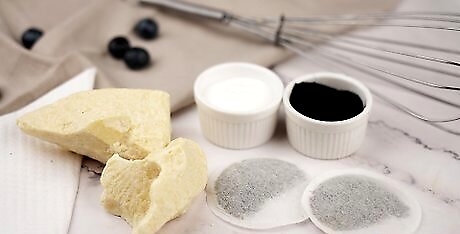
Decide what additional benefits you want your scrub to have. Do you want your scrub to just exfoliate your skin, or do you want it to have additional properties? Activated charcoal is great for facial scrubs. It can be mixed in with other exfoliants, such as sugar, or used in place of one. It is great for detoxifying skin and clearing out blackheads. Baking soda is also great for facial scrubs, and is often used as a home remedy for acne. It can be added to other exfoliants, or used on its own. Cocoa butter and shea butter can make your scrub luxurious and moisturizing. You may have to soften or melt your butter in the microwave first, before adding it to your scrub. Herbal teas can be added to your scrub. There are different types of teas that help remedy different types of skin problems. Chamomile and green teas are great for all skin types. Peppermint, sage, and thyme are great for oily skin, while calendula, lavender, and rose are beneficial for dry skin. Lemon and grapefruit juice can help freshen and brighten the skin. It can also add some aroma to your scrub.
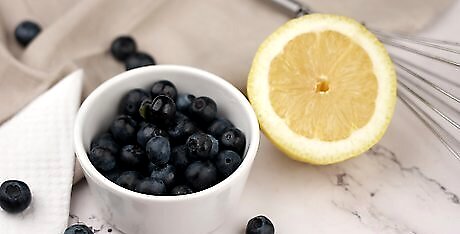
Decide if you want your body scrub to have a special appearance. You can leave your body scrub plain, as it is, or you can choose to add some color and shimmer. Mica powders, purchased from soap-making shops, will make your body scrub shimmery. Soap colorants can add color to your scrub. They come either in liquid form, in dye blocks, or as powders. Food coloring can also add color to your scrub. Fruit can add some color and scent to your body scrub. Consider crushing some berries or squeeze juice from a citrus and adding that to your scrub. If you choose to do this, however, use your scrub within a few days. Avoid adding shimmer and color to your scrub if you intend to use it on your lips. Instead, consider adding chap stick or lip balm.
Putting Everything Together
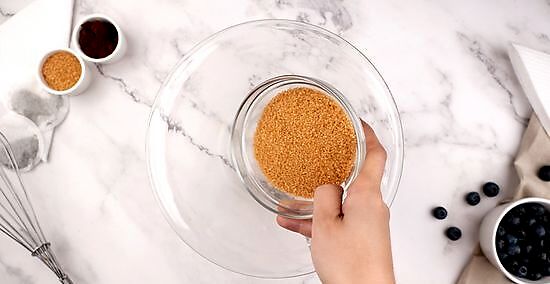
Put your chosen exfoliant into a bowl. You can start out with 1 cup of exfoliant, or use 2 parts exfoliant to 1 part carrier oil.
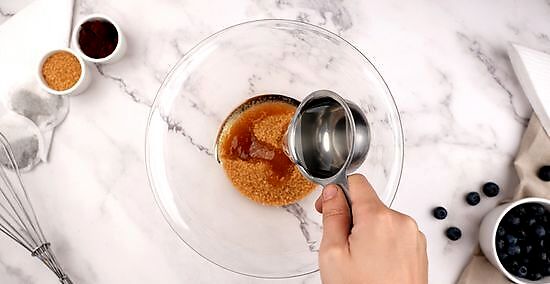
Add your chosen carrier oil. You can start out with ¼ to ½ cup of carrier oil. The less oil you use, the more abrasive your scrub will be, and the more oil you use, the more moisturizing it will be. You can also use 1 part carrier oil to 2 parts exfoliant. Consider substituting your carrier oil with honey, milk, or yogurt. If your carrier oil is particularly thick, like coconut oil, you will need to melt it in a saucepan over a stove, or in a heat-resistant cup in the microwave.

Stir your ingredients together. Use a large wooden spoon or a spatula to mix your ingredients together. The exfoliant will not completely dissolve, which is what you want. You will end up with a grainy texture. If you want your scrub to be more abrasive, then add more of your exfoliant. If you want your scrub to be smoother and gentler, then add more of your carrier oil. At this point, you can put your scrub into a jar, or you can continue adding other ingredients.
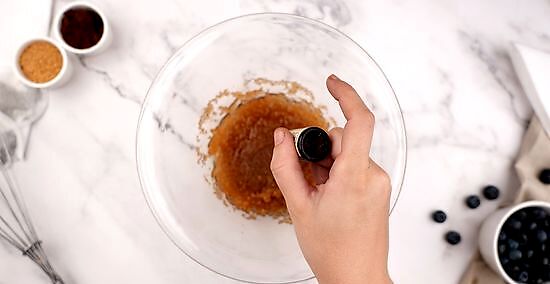
Add the essential oil. If you choose to use essential oil in your scrub, you can add it now. Use anywhere between 5 to 10 drops. If you are using a small amount of exfoliant and carrier oil, then you may have to use less essential oil.
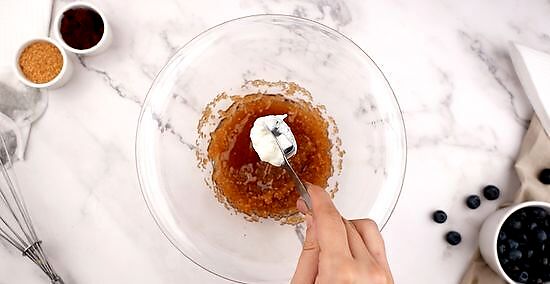
Add everything else. If you are adding additional ingredients, such as honey, fruit juices, or colorants, do so now. For liquid dyes and food coloring, start with a few drops. Do not add too much, or else you risk coloring your skin. You want the color to the subtle and pale. For powder colorants and mica powders, start with a pinch or too. As with the liquid colorants, you do not want to add too much, or else you will risk staining your skin. For other ingredients, such as butters, herbal teas, honey, juices, and yogurt, start with 1 tablespoon (14.8 ml), and continue adding more to your taste. If you are making a smaller batch, then start with a smaller amount, such as a teaspoon. If your scrub is starting to get too runny and lose its grainy texture, the exfoliant might just be settling. Give it a stir. If that does not help, you have added too many additives. Remedy this by adding in more of your exfoliant.

Mix your scrub again. Once you have finished adding your optional ingredients, such as essential oils, additives, and dyes, you will need to stir your scrub again to mix everything together.
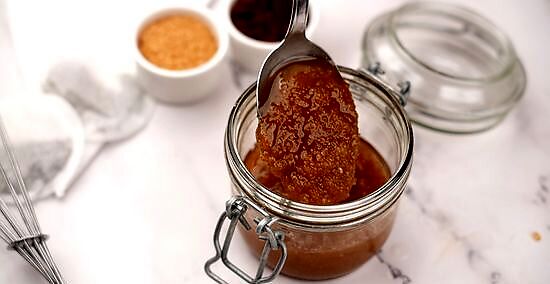
Put your scrub into a container. Once you have finished combining all of your ingredients, transfer your scrub into a container and store it in the refrigerator. You can use any container you want, as long as it has a lid. The best containers have a lid that either screws on, or closes with a latch.
Using Your Body Scrub
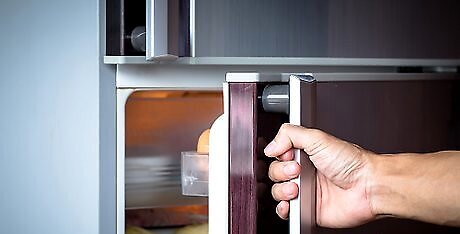
Store your body scrub in the fridge. Because you made your body scrub at home, it does not have the preservatives that many commercial scrubs do. Keep the container sealed and store it in the fridge when you are not using it.
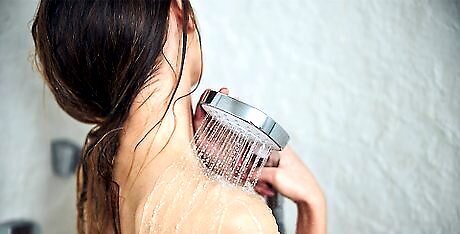
Use your body scrub in the bath or shower. You can rub the scrub over your skin while you are taking a bath or shower. Be sure to rinse it off. Application is key. You want to apply it in gentle circular motions in an upward direction— always lifting, not pulling downwards. Also, do not press too hard. Otherwise, you can end up irritating and damaging your skin. If you are using a lip scrub, simply rub it over your lips, and either wash it off or lick it off.
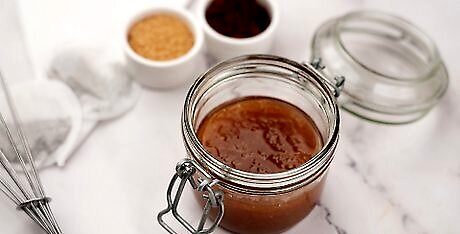
Do not use your scrub every day. Instead, treat yourself to your body scrub once or twice a week. Using it too much may over-exfoliate your skin and irritate it.

Consider giving your body scrub away as a gift. Body scrubs can make great, customizable gifts for birthdays, bridesmaids, Mother's Day, and other occasions. Put your body scrub into a glass jar and give it away as a gift. You can customize your jar as well: Design and print a colorful label. You can put this label on the jar itself, or on the lid. Paint the lid of the jar a color that compliments the color of the scrub. Use chalkboard paint to paint a patch on the jar, then use chalk to write a message on the "label" once the paint dries. Tie twine or ribbon around the jar.
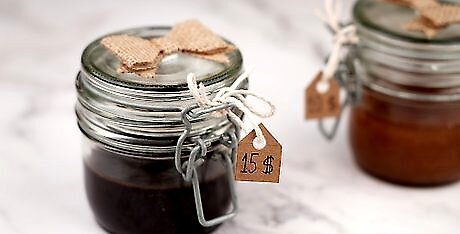
Consider selling your scrubs. Homemade beauty products are popular, and you can even start your own business selling them. Consider opening a shop online, or selling your products at farmers' markets or art and wine festivals. If you are selling your products online, do not make them in advance. Body scrubs are perishable, and you do not want to sell your customer an expired product, or a product that will expire before he or she can enjoy it.




















Comments
0 comment